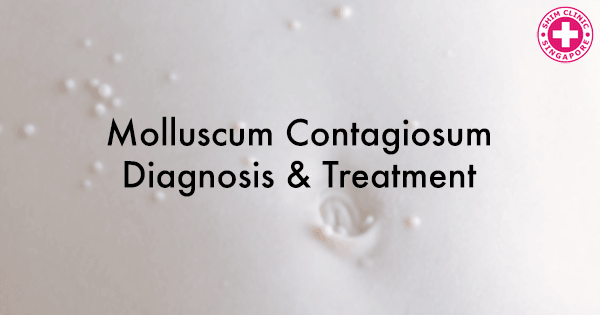Molluscum contagiosum is a virus that causes skin infections and affects both children and adults. The virus is transmitted through close contact or through during sexual contact. Molluscum contagiosum virus is more common in sexually active adults. The virus is common all over the world, especially in tropical areas. This disease is also more prominent in overcrowded areas with very bad hygiene and high rate of poverty. The virus causes multiple skin lesions that are rounded, dome-shaped, and pink and about 2-5 mm in diameter. There are hundreds of thousands molluscum contagiosum cases diagnosed annually.
The molluscum contagiosum virus was originally defined and later named by Bateman in the early nineteenth century. Over time, more and more cases were described and similar to this virus. Goodpasture later on revealed the similarities of molluscum and vaccinia. Even though the disease was thought to infect humans only, there has been cases where they found animals with the virus.
Signs and Symptoms of Molluscum Contagiosum
Signs and symptoms of molluscum contagiosum include small raised, round lesions with a small dimple in the center. The lesions can sometimes get red, inflamed and itchy. The lesions can usually be found appear on
- Arms
- Hands
- Armpits
- Neck
- Face
These symptoms occur especially in children. In sexually active adults, the lesions can also appear the genitals, upper thighs and lower abdomen if the molluscum contagiosum was infected through sexual contact.
The lesions can be easily scratched, though this is not advised as it can spread the virus to adjacent parts of the body. The molluscum contagiosum virus can be spread through:
- Direct skin contact.
- Objects that are contaminated such as towels, toiletries etc.
- Sexual activities with infected parties.
Proper Molluscum Contagiosum Diagnosis and Testing
You can get tested for molluscum contagiosum in any clinic including an STD clinic, a health department or any private health care providers. These facilities will also help you get any treatment necessary.
Most doctors can easily recognise a molluscum contagiosum infection visually because of the distinctive dome-shaped lesions. However, for precaution measures, a doctor may collect scrapings skin from the infected area for observations with a microscope.
When you are getting test for Molluscum Contagiosum it is always a good idea to also get tested for other STDs that you could have contracted at the same time including HIV testing.
Treating Molluscum Contagiosum
Treating molluscum contagiosum is not complicated and you will usually get better without treatment. The lesions usually disappear by themselves after 6 – 12 months. Once all of the lesions are gone, you’re no longer contagious.
Sometimes your doctor may recommend removing the lesions, especially in cases where the patient is an adult and the lesions are contagious. In such cases, the doctor may use a combination of treatments.
Using Medications
You can also treat molluscum contagiosum infection by using topical medications that can be applied directly to the lesions. These include:
- Medications that help dissolve the lesions. These usually contain salicylic acid or potassium hydroxide.
- Topical creams or gels that contain retinoids, adapalene and tazarotene effective in treating molluscum contagiosum. Do not use these medications during pregnancy.
Surgical Procedures
Surgical methods also effective in removing molluscum contagiosum lesions include:
- Scraping
- Freezing/cryotherapy
- Laser therapy
What to Do After Treatment
Molluscum contagiosum does not remain in the body once infection clears up. However, you can get infected again if there is contact with another infected and contagious person. To stay safe from reinfection, do the following:
- Keep the infected area clean.
- Use two towels after taking a shower or bath. One for the infected area and another for drying other parts of your body.
- Do not scrape or scratch the treated area.
- Wash your hands after touching the treated area.
- Avoid having sex especially if it is uncomfortable.
- Take pain relievers and apply cold compresses to deal with the discomfort.

